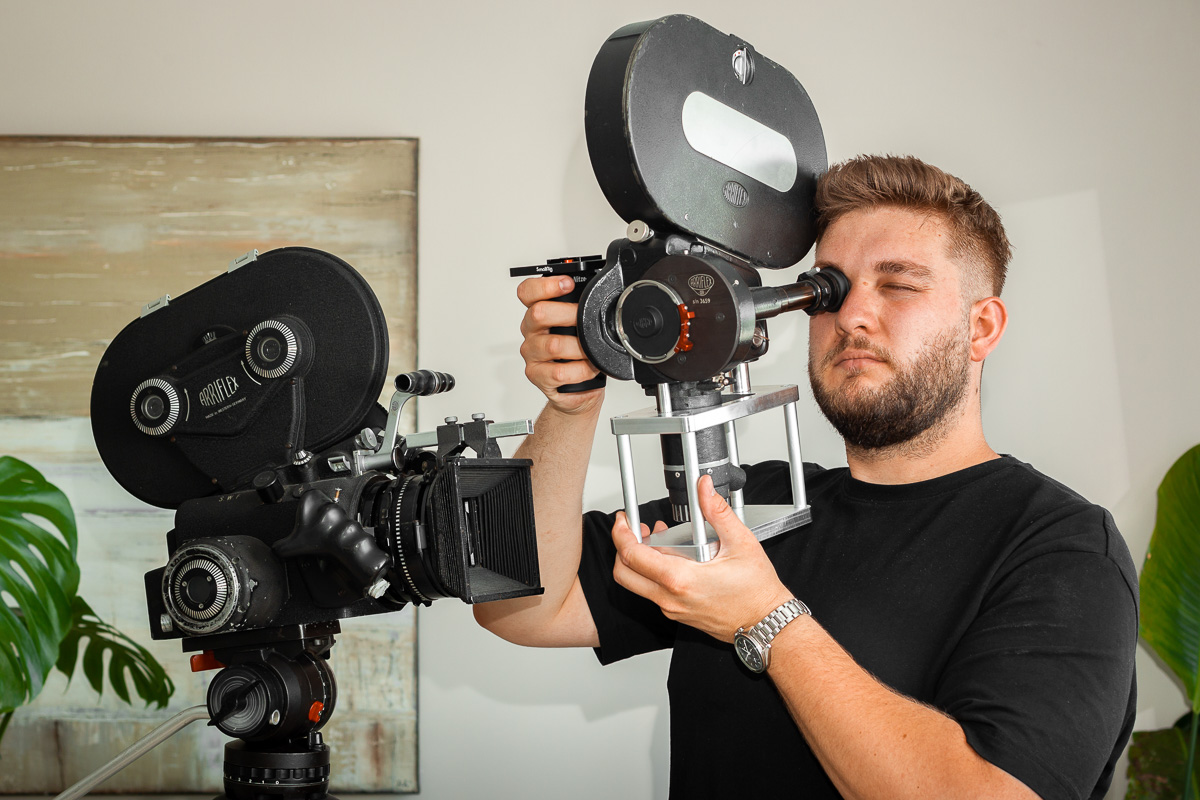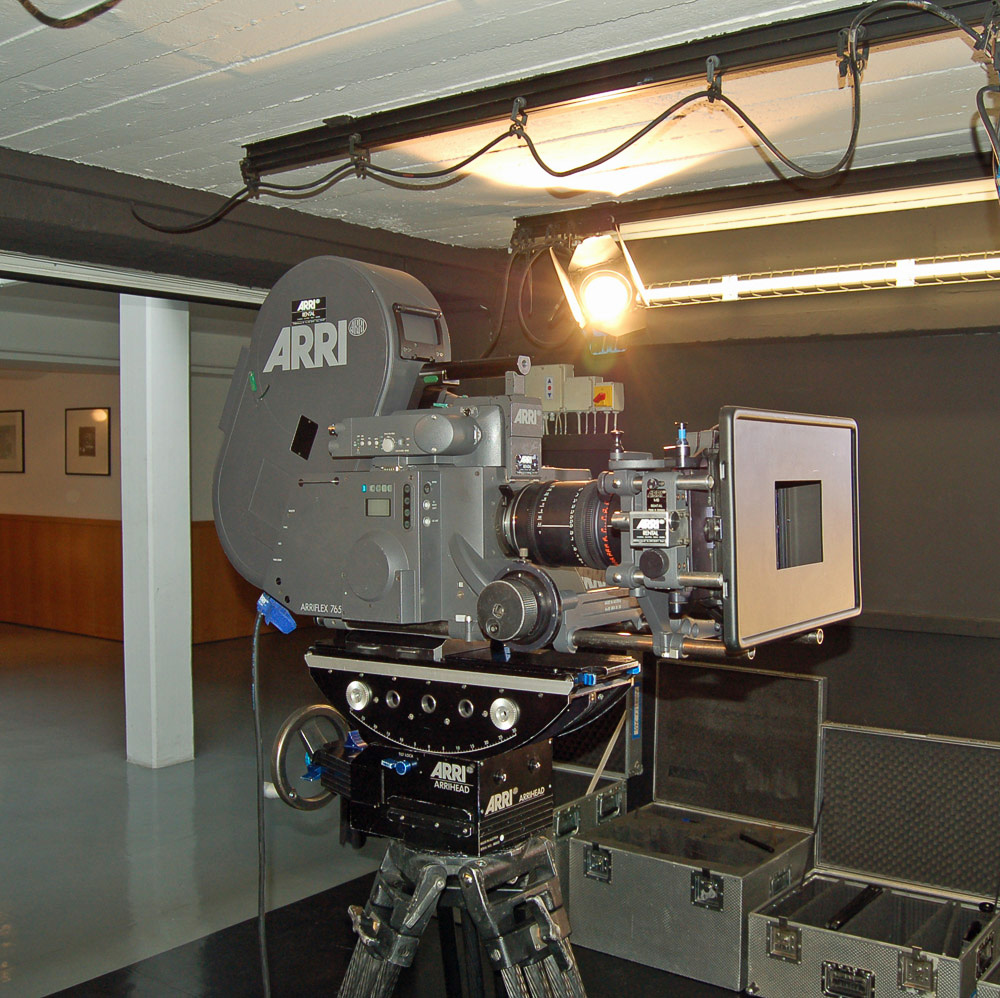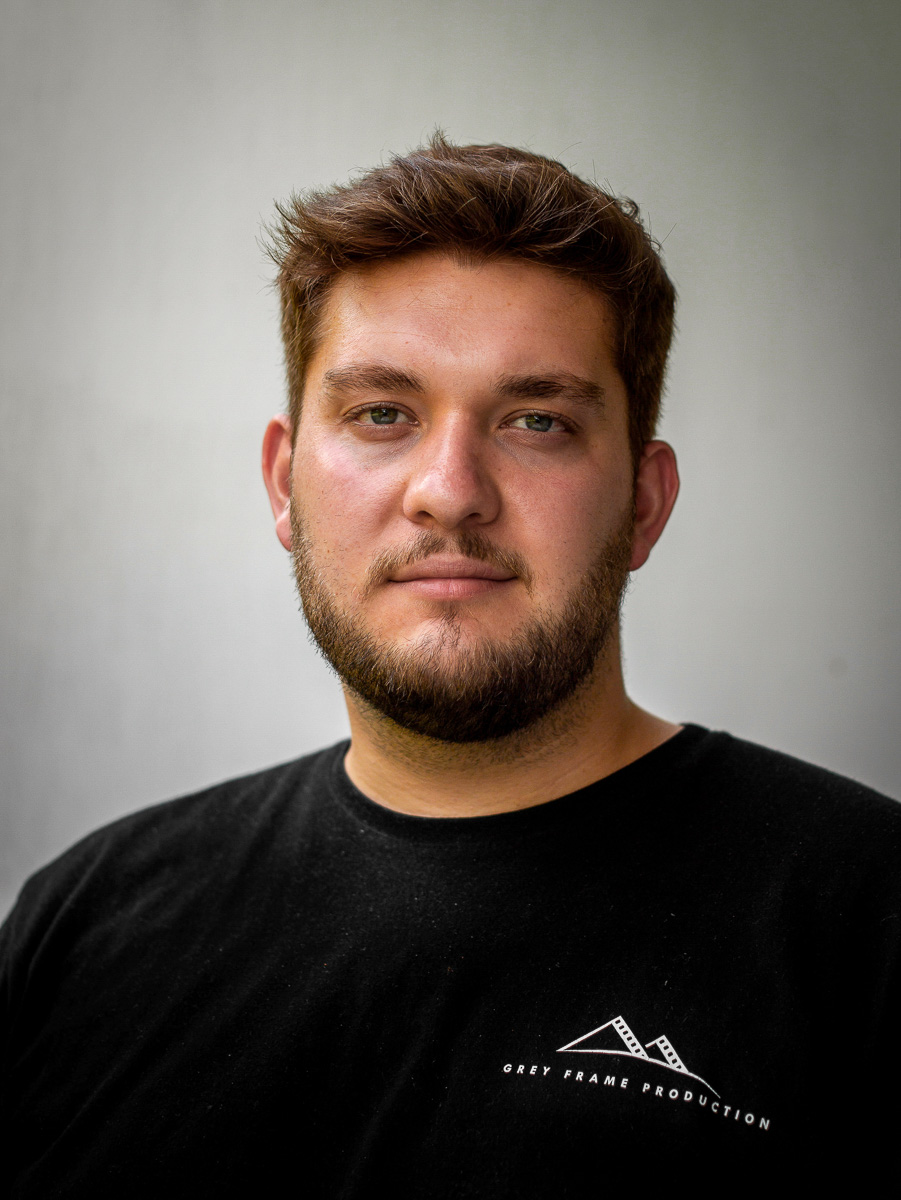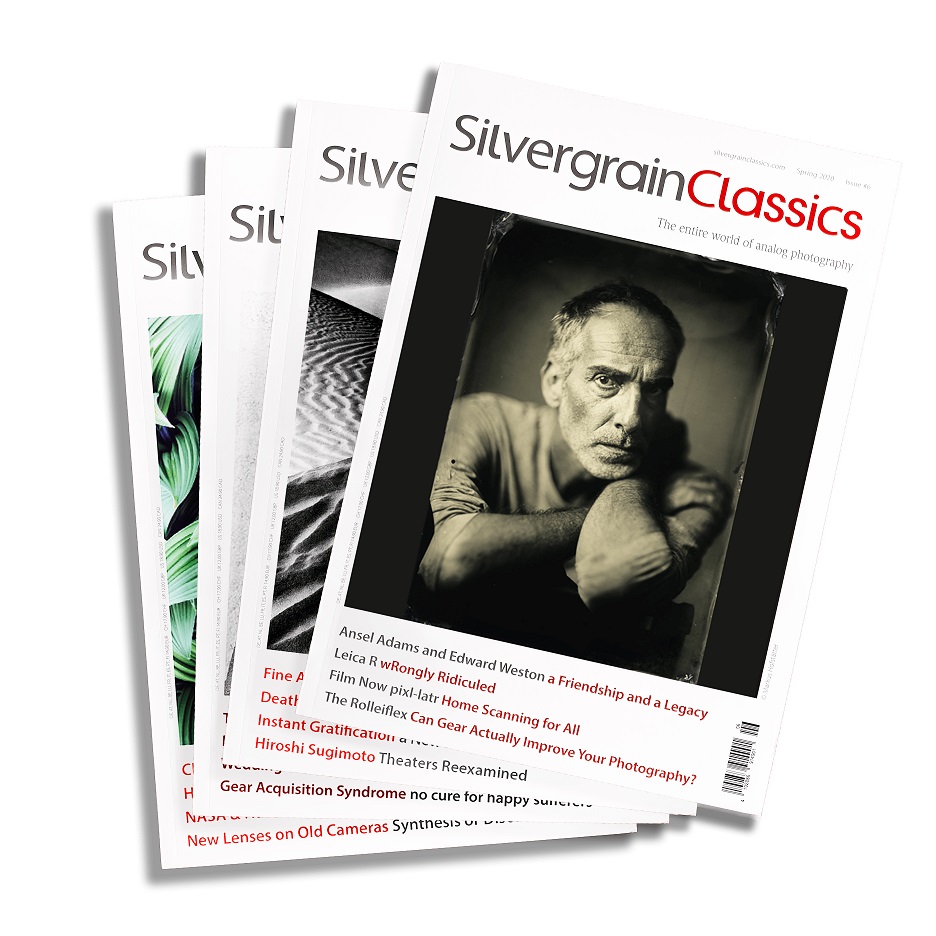Think Big, Film Big
Chris Peschken speaks with Cinematographer Joshua Ewert about his 65mm short film project, Lehitraot

In my over 35 years in the film and TV industry, including working and living in Hollywood for almost 20 years, I have met a lot of very promising, aspiring young filmmakers. I thought I had heard it all — the goals and dreams — until I recently met the talented German filmmaker and cinematographer Joshua Ewert.
Born in Germany in 1998, Josh lives in France`s beautiful “Grand Est” region near the German border. He studies cinematography and film at the Hochschule in Offenburg, Germany. His passions are “old cameras”, photography, and movies. His role models are multiple academy award winning Directors of Photography Emmanuel Lubezki and Vittorio Storaro.
His current project is a short film entitled Lehitraot, a historical drama about friendship, difference, love, despair, and fear. The film is set in both 1998 and 1940 in the French “Grand Est” region.
Paul, a 93-year-old French farmer, is lying in his bed. He is dying. His friend and nurse, Léa, 21, takes care of the old man. In his home, Léa finds a box of items from the past, a box Paul has not seen for 58 years. Memories come flooding back, and Paul recalls the summer of 1940 and the wonderful friendship with Samuel, a German-Jew.
But this is not just another short film. Joshua Ewert decided to shoot the film on 65mm Film, and on top of this extraordinary approach he chose probably the heaviest analog film camera on the planet, the Arriflex 765, weighing nearly 35 kg. Welcome to the world of Josh Ewert.
Josh, what inspired you to work with analog rather than digital photography?
“It all actually came about through photography, which I started in 2016. I noticed quickly that, when I used a digital camera, I just pushed a button without thinking and that I made way too many pictures. Back then, I thought that a pretty photograph was a good one — and I started to photograph less and less. At least digitally. In early 2019 I got an old Porst Reflex CTL from my grandpa and I thought, let’s try analog! Let’s go buy film and see how that works. I then had a lot of fun thinking about it, planning the pictures in my mind, and seeing what could happen. I remember I didn’t have a light meter back then; I didn’t even know how it worked. So, I actually shot a total of four motives and many different exposures, overexposed and underexposed each one, and wrote my settings down. That’s how I got into analog photography, and since then I’ve shot hundreds of films. Today I shoot almost exclusively analog but I’m getting into digital again.”
Let’s talk about your project. How did you come up with the idea tot not only make an analog film, but also use the huge 65mm format?
“First of all, I believe that motion picture film is the essence of cinema; it is a chemical and magical process of bringing an image, or multiple images in this case, to life. It’s all about creating an illusion, a mystery and an experience for the audience. I think you get a sense of authenticity and realness on film that is unmatched in the digital world.
So I decided early on that the film would be shot on analog film. As a young filmmaker, another reason was to distinguish myself from others in some way.
Additionally, the film deals with a period from the past. The film takes place in 1998 and 1940, and for me it was logical to tell this story via an analog medium, which I believe is more authentic. I think it is a kind of homage to Cinema and to History. And then, of course, I researched what format I wanted to use. First came the idea of 35mm, which is already a very large and expensive medium for students. The 35mm negative offers great quality and amazing sharpness. But even then, the idea of 65mm kept coming up.
65mm is the largest negative there is. [Editor’s note: 70mm film, as is currently publicized because of Christopher Nolan’s film, Oppenheimer, is shot on 65mm negatives and the projection copies are made with an additional 5mm of magnetic audio tracks.] It is sort of like a medium format frame in photography, only that we shoot 24 frames a second. When you shoot medium format, you have different optical characteristics to work with. You have more vibrance, more quality and sharpness. But of course, it was a challenge because nobody, I mean as a film student, has ever done it before. It’s very expensive.
So, I watched several movies and documentaries that were shot on 65mm. Samsara (2011) is one of them. It’s a documentary about the world. They shot 65mm in 25 countries over 5 years. The images were unbelievable, simply breathtaking! It’s not something that you see every day. It was filmed with the Panavision System 65 on 65mm film (Kodak Vision2 50D 5201, Vision2 250D 5205, Vision3 250D 5207, Vision2 500T 5218, Vision3 500T 5219).”
You will shoot your short film completely with an Arriflex camera?
“Yeah, I was actually looking at the Magellan 65 in the beginning, as well. It’s a nice compact 65mm camera from Denmark. The only downside is that the camera is a so-called “MOS” camera, so you can’t record sound near it because it is very loud. But that camera wasn’t possible, especially since it remained a student production, which is low budget after all. Panavision wasn`t really an option as I am more of an Arriflex fan.
I like their cameras so much, they’re as good as it gets. So, I got on the phone with Arri Rental and told them about my idea and this project. They were thrilled and said that they want to support this crazy idea. I think they also want to encourage young filmmakers to come up with crazy ideas like this. I remember in the first e-mail I said, “I like to think of a world where crazy ideas and big dreams have their place.” Maybe they thought that was cool.”

Super! Of course, the camera alone doesn’t do it. You need the 65mm film material. How did that come about?
“ After the conversation with Arri, I needed to get Kodak on board. I contacted Kodak Germany and they were immediately excited. Unfortunately, 65mm film is not in stock in Europe, but only in the USA. It is produced there. That meant that we now needed to get the material from the US. And the next problem was, where to develop? There are only three labs in the world that are still developing and scanning 65mm motion picture film. They are either in the US or in London. So after I had the okay from Kodak Germany, we got in touch with Kodak London. They are very nice film nerds just like ourselves. That’s how it came about that we got Kodak Germany and London involved early in pre-production.”
What film stock did you decide on?
“ In the beginning, I wanted the whole range of Kodak’s Vision 3 film: 50D, 250D, 200T and 500T. But it’s not very practical when we have four different short ends with a couple of feet left, but not enough for the next scene. Switching film stocks this much would also be way too much for us. So we decided to use only tungsten balanced film. In this case we decided to go with 200T and 500T. 200T has 200 ISO and 500T actually has 800 ISO but a 500 EI from Kodak, as they recommend to rate it at 500 ISO to get the best results. So, we’re working with those two stocks.”
When you film with an Arri 765 , do the technical requirements that are necessary influence or determine the narrative style of the film?
“Not really. The camera is just a tool, after all, and it certainly doesn’t influence us in a negative sense. I mean, the camera is not really made for shoulder shots, handheld, or a steadicam. So, it was clear from the beginning that the camera will mostly be on a tripod and a dolly. But I would have done that with a Super-8 camera anyway. As for the size of the camera, yes — for interiors you’re a bit more limited than with a smaller one. But because we will be shooting mostly exteriors (80% of the film happens outside in the field), it doesn’t bother us. So, in terms of technical limitations, there was actually no disadvantage with the camera. We just have to prepare well, and do our homework.”
When will you start principal photography?
“The plan is to shoot in August. Then, of course, the film first goes to London to be developed and scanned. Once we have the digital footage, we’re going to work on the editing of the movie. In February of next year, it should be ready — at least we hope so. It will be submitted to festivals, and we’ll see where the film will be shown. Most of the time you can’t broadcast or show it anywhere else before festivals because festivals like to have the right to premiere. So, we’ll wait until we’ve had the premiere of the film to show it somewhere else in a few years.”

What’s your personal objective in the film business?
“Because the project is my bachelor’s thesis, the very first thing I want to do with it is get my bachelor’s degree. But I also want to have fun with it. I want to let off steam with it. And, as a future goal, it should also serve for me to apply for a master’s degree. I would love to do a master’s degree in cinematography at some great university where I can meet new people, maybe even learn about other cultures, experience different filmmaking — maybe in England, Spain, Mexico, or the USA. After I finish my master’s? We’ll see. The ultimate goal would be to work in the industry as a cinematographer. I really want to make at least one feature film and one perfume advertisement.”
Interview by Chris Peschken, Film & TV Producer, Wiesbaden, Germany
These online articles are free – we see it as our contribution to the film photography community. You can support this content by subscribing to our awesome print magazine about the entire world of analog photography!
https://shop.silvergrainclassics.com/subscriptions/

